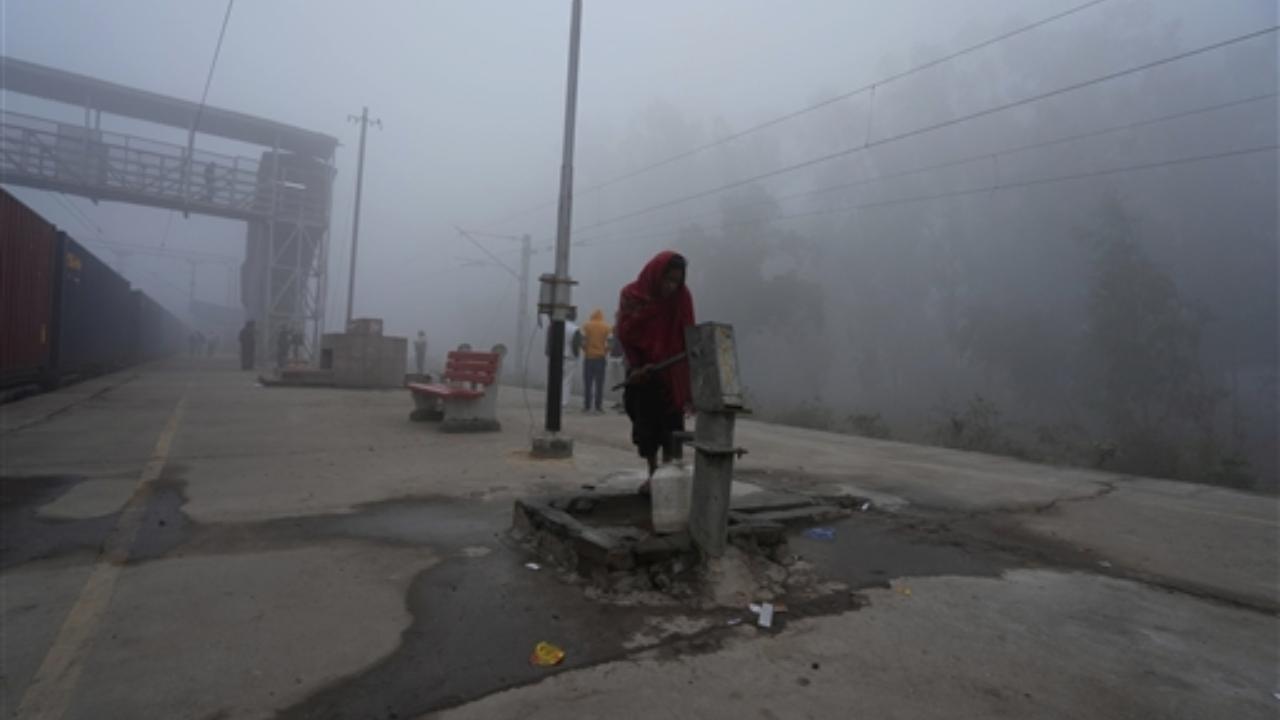Flight operations, however, were unaffected

A woman collects water from a hand pump amid dense fog on a cold winter morning, at the Maripat Station in Greater Noida Pic/PTI
Dense to very dense fog engulfed the Indo-Gangetic plains, including Delhi, for the second morning on the trot on Tuesday, lowering visibility to 50 metres in the city and affecting road traffic and train movement.
ADVERTISEMENT
Flight operations, however, were unaffected, an airport official said.
According to the India Meteorological Department (IMD), very dense fog is when visibility is between 0 and 50 metres, 51 and 200 is dense, 201 and 500 moderate, and 501 and 1,000 shallow.
The Met office had on Monday forecast that the Indo-Gangetic plains may see "dense to very dense" fog over the next five days, which may result in cancellation and diversion of trains and flights.
On Tuesday, 11 trains were reported running late by one to five hours.
Visibility dropped to 50 metres at the Palam and Safdarjung airports between 5:30 am and 7 am, an IMD official said.
Also Read: Air quality in Mumbai improves after a week
Satellite images showed a thick layer of fog over Punjab, Haryana, Delhi, north Rajasthan and Uttar Pradesh.
"Due to moisture and light winds at lower tropospheric levels over Indo-Gangetic plains, dense to very dense fog in many/some pockets very likely over Punjab, Haryana, Chandigarh, Delhi, Himachal Pradesh and Uttar Pradesh in night/morning hours during the next three days and dense fog in isolated pockets for subsequent two days," the Met office had said in a statement on Monday.
The IMD also issued an advisory, saying difficult driving conditions on highways, some collisions and tripping of power lines are possible.
"Likely train delays, diversons and cancellations. Airport operations are likely to be affected with flight delays and cancellations," it said.
The weather department said long exposures to fog can cause wheezing, coughing and shortness of breath in people having asthma bronchitis. It could also lead to eye irritation or infection.
It suggested that travellers carry essential items like water and medicine on long journeys.
The Sadarjung Observatory, the primary weather station in Delhi, recorded a minimum temperature of 6.3 degrees Celsius, two notches below normal. The maximum temperature is likely to settle around 22 degrees Celsius.
The minimum and maximum temperatures are likely to drop to five degrees Celsius and 20 degrees Celsius in the next few days.
The MeT office had earlier said that many parts of northwest India may see a warmer winter season primarily due to likely subdued activity of western disturbances.
11 trains running late in the Northern Railway region due to fog.
— ANI (@ANI) December 20, 2022
(Pic shared by CPRO Northern Railway) pic.twitter.com/elU2OzS37h
This story has been sourced from a third party syndicated feed, agencies. Mid-day accepts no responsibility or liability for its dependability, trustworthiness, reliability and data of the text. Mid-day management/mid-day.com reserves the sole right to alter, delete or remove (without notice) the content in its absolute discretion for any reason whatsoever.
 Subscribe today by clicking the link and stay updated with the latest news!" Click here!
Subscribe today by clicking the link and stay updated with the latest news!" Click here!







